One treat that Gary and I indulge in is having a soda after a good hike - especially if it was on a hot day. It just goes down so well, even better than a cold glass of water with ice. But, what would we do if soda had never been bottled? We’d have to go to the nearest soda fountain and buy a glass. How convenient is that? Not too convenient. And that brings up our adventure of the day, to the Museum of Coca-Cola in Vicksburg. Here is where Coke was bottled for the first time in 1894.
Today, we visited the restoration of the old candy store owned by Joseph A. Biedenharn of Vicksburg.
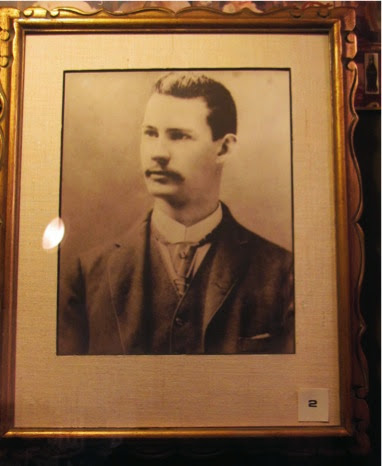
He was the eldest of twelve children and went into the candy business founded by his father and uncle. He sold soda from a ‘soda fountain’ in all kinds of flavors. One day a Coke salesman dropped by and left a sample of Coke syrup for Biedenharn to try out. Being a true entrepreneur, he started stocking it in his soda machine. However he soon realized that he was only selling to city dwellers - and not any rural people. He thought that farm people might like the ‘Pause That Refreshes’ after a long day on the farm. Why not bottle it and sell it that way? And his idea was born. He sold his bottles for 5 cents because his father told him that people would hold onto a dime but spend a nickel for pleasure.
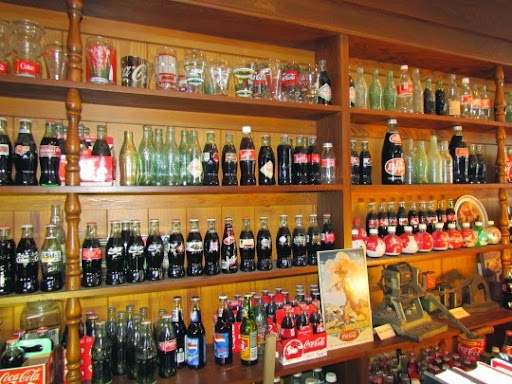
And, he was not only the first bottler but he also established the franchise bottling system and several of his brothers and his one sister had franchises. Then he and a few others purchased a crop dusting service in 1925 and bought 8 planes, the largest crop-dusting fleet in the world. Later that fleet moved form crop dusting planes to passenger airlines - called Delta Airlines.
The building we visited was the original Biedenbarn candy store where he began to bottle Coke. As his business grew, he built a larger building and then a larger building. Meanwhile this building changed hands until 1979 when the Biedenharn family repurchased it, restored it to its original configuration, donated their collection of Coke memorabilia and then turned it over to the Vicksburg Foundation for Historic Preservation.
What a fascinating collection of old Coke advertisements, bottles, coasters, magazine ads, clocks, etc. Whatever would sell that would have Coca-Cola written in big bold letters. Here’s Johnny Weissmuller and Maureen O'Sullivan.
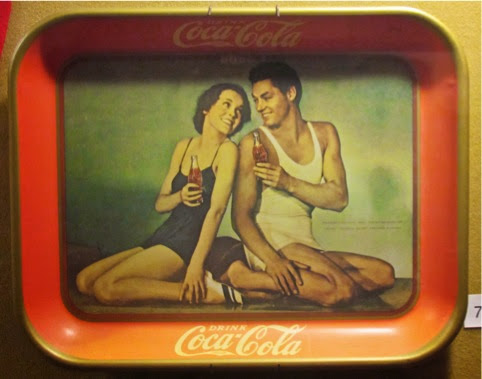
I liked this simplistic calculator which told a bottler how much he could make if he bottled so many bottles, sold at such and such a markup.
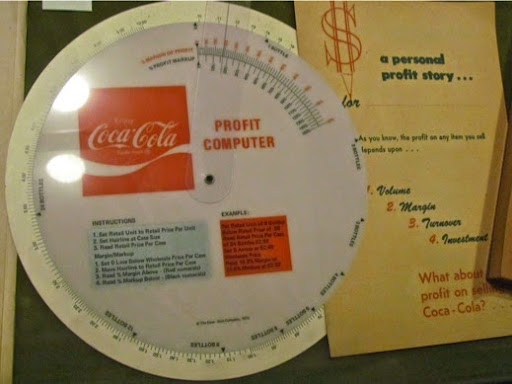
At one time bottlers could put Coke into any bottle they wanted. Here are some old examples, not the different bottle sizes, colors and one even has a paper label.
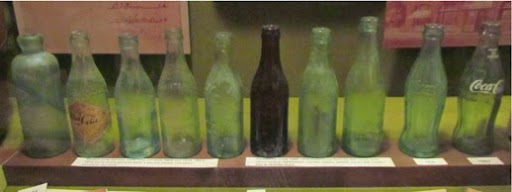
Here’s a replica of the machine he devised to bottle Coke. On the left with all the tubing is the ‘Carbonator’ (sounds like the Terminator), below that is the water tank with the round wheel and in the jug on top on the middle is the syrup. They are all connected at the nozzle on the table and bottled. The bottler made one at a time and it took all day to make enough to deliver for the next day. A real hands-on operation.
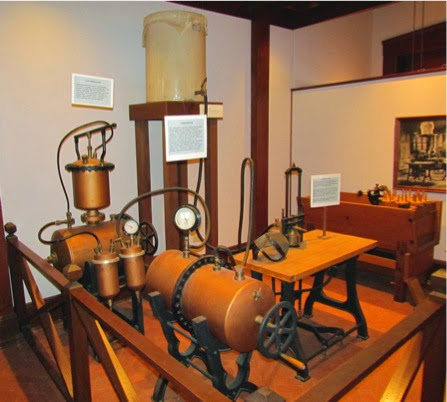
I see all this curled tubing and can only think of the old song: ‘and the music goes round and round and it comes out here.’ Must have been a song about a tuba.
Note the metal screened face mask on the table next to the nozzle. It seems the bottles were of varying qualities and every now and then one might be a bit weak and explode.
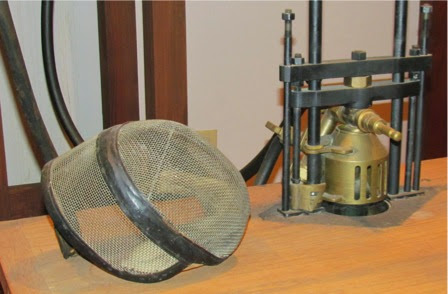
Here’s the wash basin where they washed the bottles - again one at a time with a long brush.
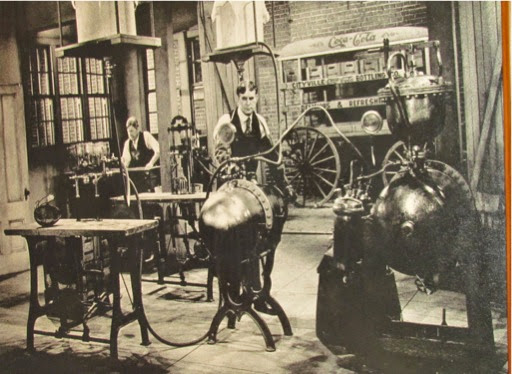
Of course, after a tour of the bottling factory museum, it’s time for a short stop at the local coffee house. Well, change that ‘short’ to lo-o-o-ng. We’re pretty plain - all we wanted was a plain old cup of coffee and we stood in line behind 4 guys that wanted skinnies, chocolaty, non-fat, sugar-free whatevers. It took forever. Finally we ordered and were told that they would bring it out. 15 minutes later, I got mine. Gary was still waiting. 5 minutes later he goes up to the counter and was told: ‘oh, regular coffee is self-serve.’ Well, thanks for telling us.
We then decided to do our daily walk and, like the locals journeyed over to the National Park and walked through the southern section. Here we could see the Texas monument and, across a ravined hillocky valley was the Iowa monument (the white columnar structure in the center background). You can see one from the other - they were that close, shooting at each other for the 47 days of the siege.
Here’s a close-up of the Iowa monument with one of the 6 panels.
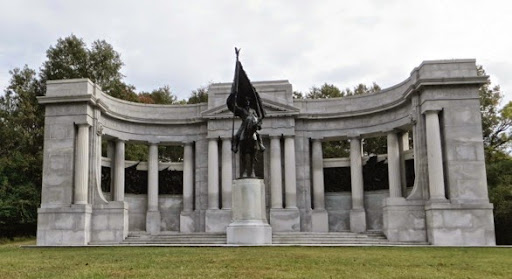
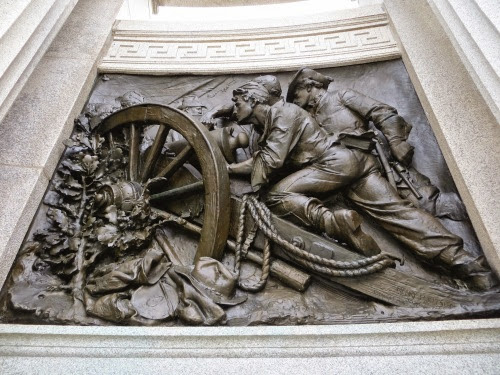
We’re standing on one of the Confederate fortifications and you can see the zig-zag tunnel that the Union was digging to get closer to the Confederates. The sides of the zig-zag were made much taller with big packets of brush bound together with cording. The Confederates could not see where they were through this and the Union could keep on tunneling.
Here, on this hill you can see how far up the hill the Union got - almost to the top (those Iowa boys were going for it). The Confederate troop markers are red and the Union markers are blue. Note, in the second picture, that they are right together here on this hill - and it was all hand-to-hand and bayonet fighting at this point.
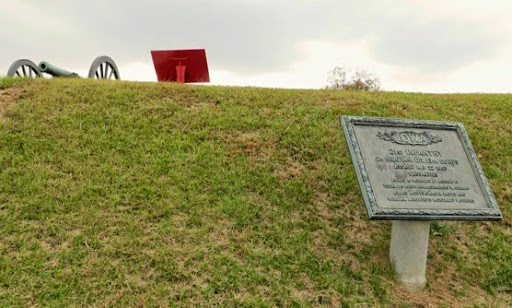
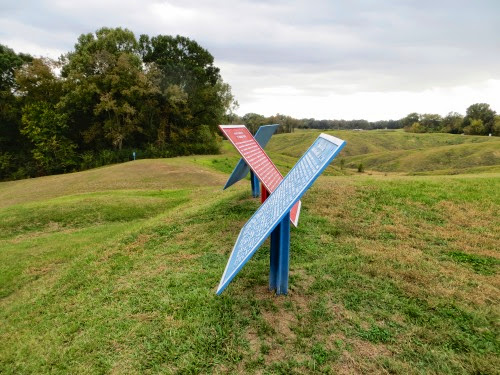
We are back at the campground and - ooh, I have been deemed ‘worthy’ - I just got online at the campground wi-fi. I’m golden. I’ve lived a good life. Whoo-eee. Oops, I just got knocked off. No wonder we have our own connection in the RV.

No comments:
Post a Comment